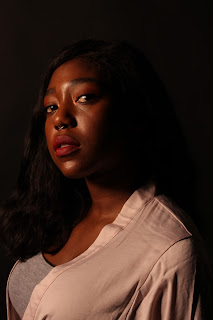For one of the tasks we were asked to print out two images on A3 photo paper of our choice. We had recently been inducted into these printers and the monitors and I was looking forward to printing. There was a lot more to remember than I thought and it took a long time to print. But firstly I went and got some photo paper from the print bureau, I decided to do some test prints too to male sure I was happy with how the image was printed and it was on the paper I felt suit it the best. So I switched the printer on, I did a nozzle check to make sure all the inks were topped up and ready to use. Then I opened the images, gave them a final tweak as we were allowed to use the expensive monitors for editing the pictures. The monitors allowed you to take in the light of the room and create a preset for you to edit in, based on the sunlight around you. We were asked to print one studio shoot image and one light source of our choice. I decided to print my light source first and got to work with setting the computer up ready for printing. You had to first select the size and orientation of the paper, then the type of paper you were printing on so that it could adjust the inks to the paper. Then chose if you wanted it colour metric or perspective. I chose for both images colour metric as I felt in my test prints that they came out the best in terms of colour. I put my paper in carefully, and decided to try and print on matte paper first. When it was finished, I had a look at the print and firstly it was far too dark, and secondly I wasn't as happy with the paper choice as I thought in the beginning. So I decided to go back into Photoshop, adjust the brightness so it would print more clearly, and I went and got some satin paper. I had to change the settings again in the printer view to ensure it knew what paper the image was being printed on. I was a lot happier with this result and pleased with the outcome so now it was time to print my studio shoot image.
I thought with my studio shoot image that I would like to print on glossy to give the image a glow and shine to the image. I got the printer all set up again, but making sure to change the type of paper the image was being printed on. I then set to work loading the printer to make sure the paper was the right orientation and going to print on the right side instead of the back of the paper. I then went for it and printed my image. I again chose colour metric because I felt the colours worked best for the images I was printing. It came out and I was actually super happy. The exposure was just right and I really like the way it looked on the paper. I was really happy with the image and because it came out perfect the first time I didn't feel like it needed another print on some different paper.
I hope you enjoy. Thank you.


















































